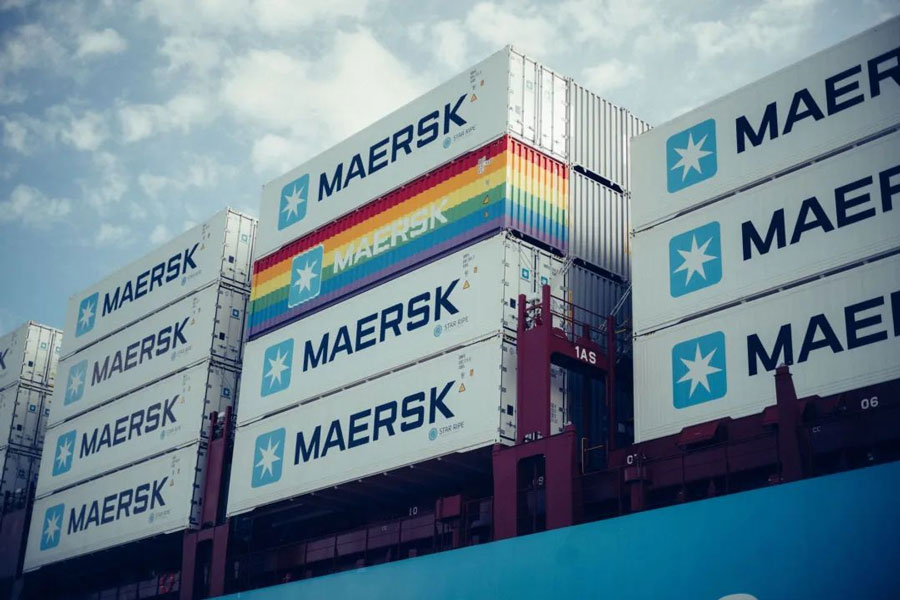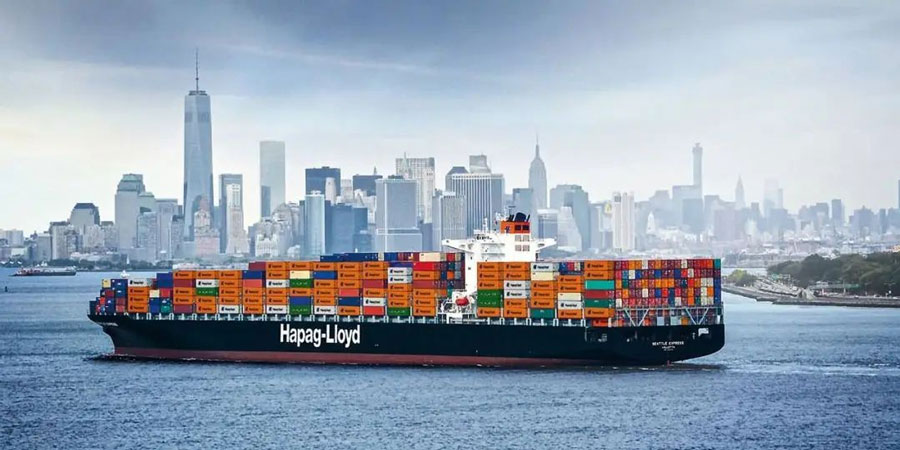

Maersk: The market is expected to remain strong in 2025
Recently, Maersk said that the North American import trade demand in 2024 is strong, and this momentum will continue into 2025, especially in the sea and air cargo sector. However, supply chain disruptions will persist.
According to the forecast of Charles van der Steene, president of Maersk North America, in the first three quarters of 2024, imports in the North American market increased by about 20%-24% year-on-year, and growth in the fourth quarter is expected to remain at a double-digit high, showing the strong resilience of market demand.
The e-commerce boom, especially the large volume of goods from Chinese e-commerce sellers, has pushed up the price of air cargo. Maersk plans to redeploy its China Air cargo services to a hub in South Carolina in early 2025. Charles van der Steene pointed out that the e-commerce market has performed "beyond expectations."
The latest report from container trading platform ContainerXChange shows that container prices in North America have increased by 20% in the past 90 days, with the most significant increase globally. The National Retail Federation noted that strikes and tariff threats will push container imports to record highs in November and December.
At present, the center of gravity of trade is gradually shifting to the US West coast. Charles van der Steene noted that strong demand and expectations of potential disruptions are bringing forward freight volumes. Despite the looming possibility of a strike, the level of activity in the market is impressive.
Strikes and Trump's support
The strike and automation issues became central points of contention in negotiations between the Longshoremen's Association and the United States Maritime Union (USMX). Maersk's automated access control system in Mobile, Ala., contributed to the collapse of talks this summer. While the October strike ended with an agreement on wages, discussions on automation were postponed until January.
If the strike lasts longer than a few days, it could cost the U.S. economy between $5 billion and $7 billion a week. van der Steene said Maersk remained "cautiously optimistic" that a deal could be reached by the January 15 deadline for talks, although the threat of a strike remained.
Global Supply Chain Outlook 2025
Looking ahead to 2025, Maersk is about to launch a new shipping alliance, the Gemini Cooperation Agreement, with Hapag-Lloyd. The partnership will come into effect in February, and despite concerns about ship numbers and capacity, van der Steene insists the alliance has sufficient capacity to meet demand and has set an ambitious reliability target of 90% for shipping by 2025.
Overall, Maersk expects the market to remain strong in 2025, especially against the backdrop of expected US GDP growth of close to 2%, Asian import trade and US-Mexico trade flows will continue to support demand for supply chain services. While the exact level of demand is difficult to predict, the strong performance of the market is expected to continue through the first half of 2025. van der Steene said companies must be prepared for possible supply chain disruptions and that the resilience of supply chains will continue to be a key issue.
According to the forecast of Charles van der Steene, president of Maersk North America, in the first three quarters of 2024, imports in the North American market increased by about 20%-24% year-on-year, and growth in the fourth quarter is expected to remain at a double-digit high, showing the strong resilience of market demand.
The e-commerce boom, especially the large volume of goods from Chinese e-commerce sellers, has pushed up the price of air cargo. Maersk plans to redeploy its China Air cargo services to a hub in South Carolina in early 2025. Charles van der Steene pointed out that the e-commerce market has performed "beyond expectations."

The latest report from container trading platform ContainerXChange shows that container prices in North America have increased by 20% in the past 90 days, with the most significant increase globally. The National Retail Federation noted that strikes and tariff threats will push container imports to record highs in November and December.
At present, the center of gravity of trade is gradually shifting to the US West coast. Charles van der Steene noted that strong demand and expectations of potential disruptions are bringing forward freight volumes. Despite the looming possibility of a strike, the level of activity in the market is impressive.
Strikes and Trump's support
The strike and automation issues became central points of contention in negotiations between the Longshoremen's Association and the United States Maritime Union (USMX). Maersk's automated access control system in Mobile, Ala., contributed to the collapse of talks this summer. While the October strike ended with an agreement on wages, discussions on automation were postponed until January.

If the strike lasts longer than a few days, it could cost the U.S. economy between $5 billion and $7 billion a week. van der Steene said Maersk remained "cautiously optimistic" that a deal could be reached by the January 15 deadline for talks, although the threat of a strike remained.
Global Supply Chain Outlook 2025
Looking ahead to 2025, Maersk is about to launch a new shipping alliance, the Gemini Cooperation Agreement, with Hapag-Lloyd. The partnership will come into effect in February, and despite concerns about ship numbers and capacity, van der Steene insists the alliance has sufficient capacity to meet demand and has set an ambitious reliability target of 90% for shipping by 2025.

Overall, Maersk expects the market to remain strong in 2025, especially against the backdrop of expected US GDP growth of close to 2%, Asian import trade and US-Mexico trade flows will continue to support demand for supply chain services. While the exact level of demand is difficult to predict, the strong performance of the market is expected to continue through the first half of 2025. van der Steene said companies must be prepared for possible supply chain disruptions and that the resilience of supply chains will continue to be a key issue.





